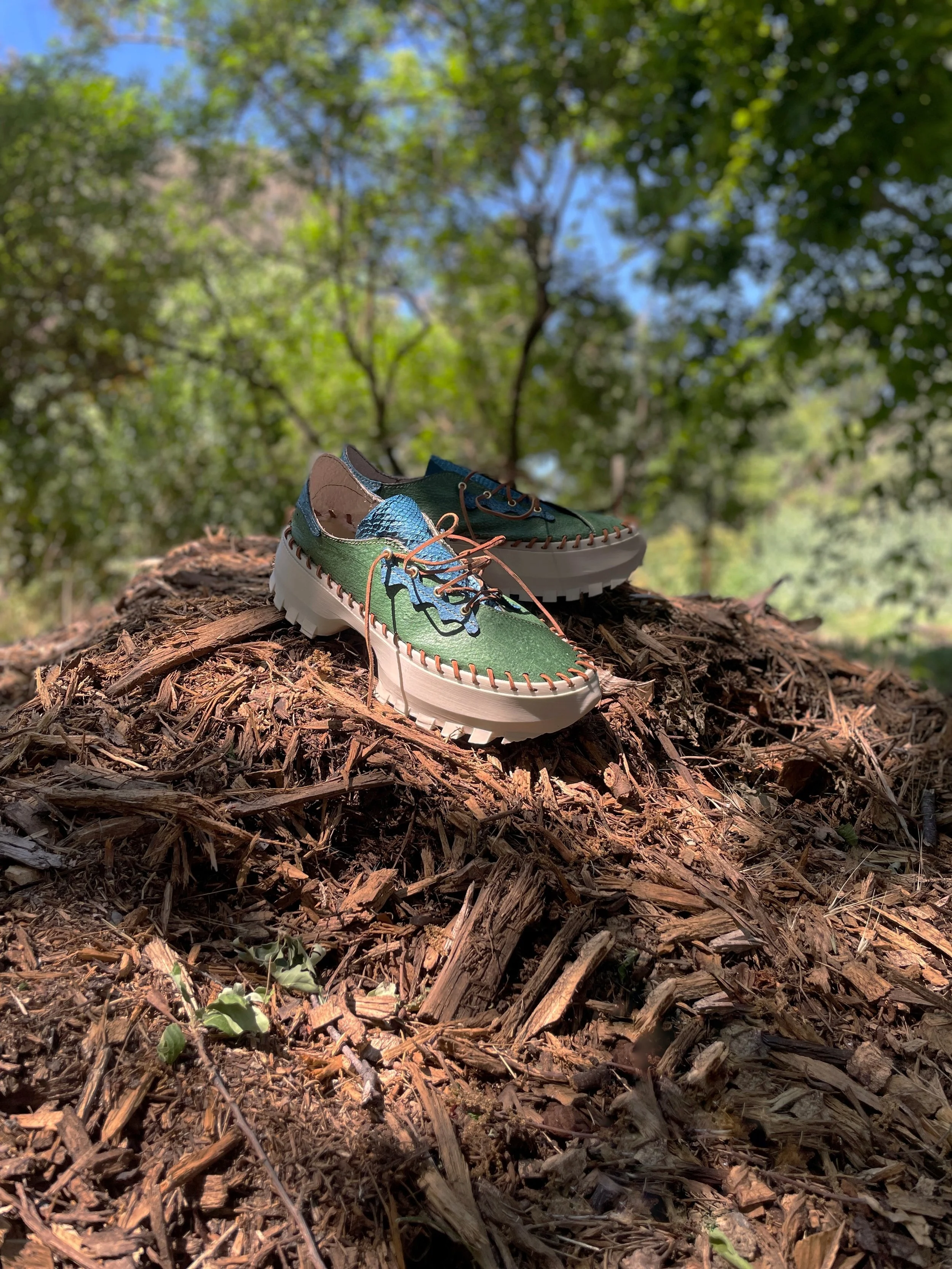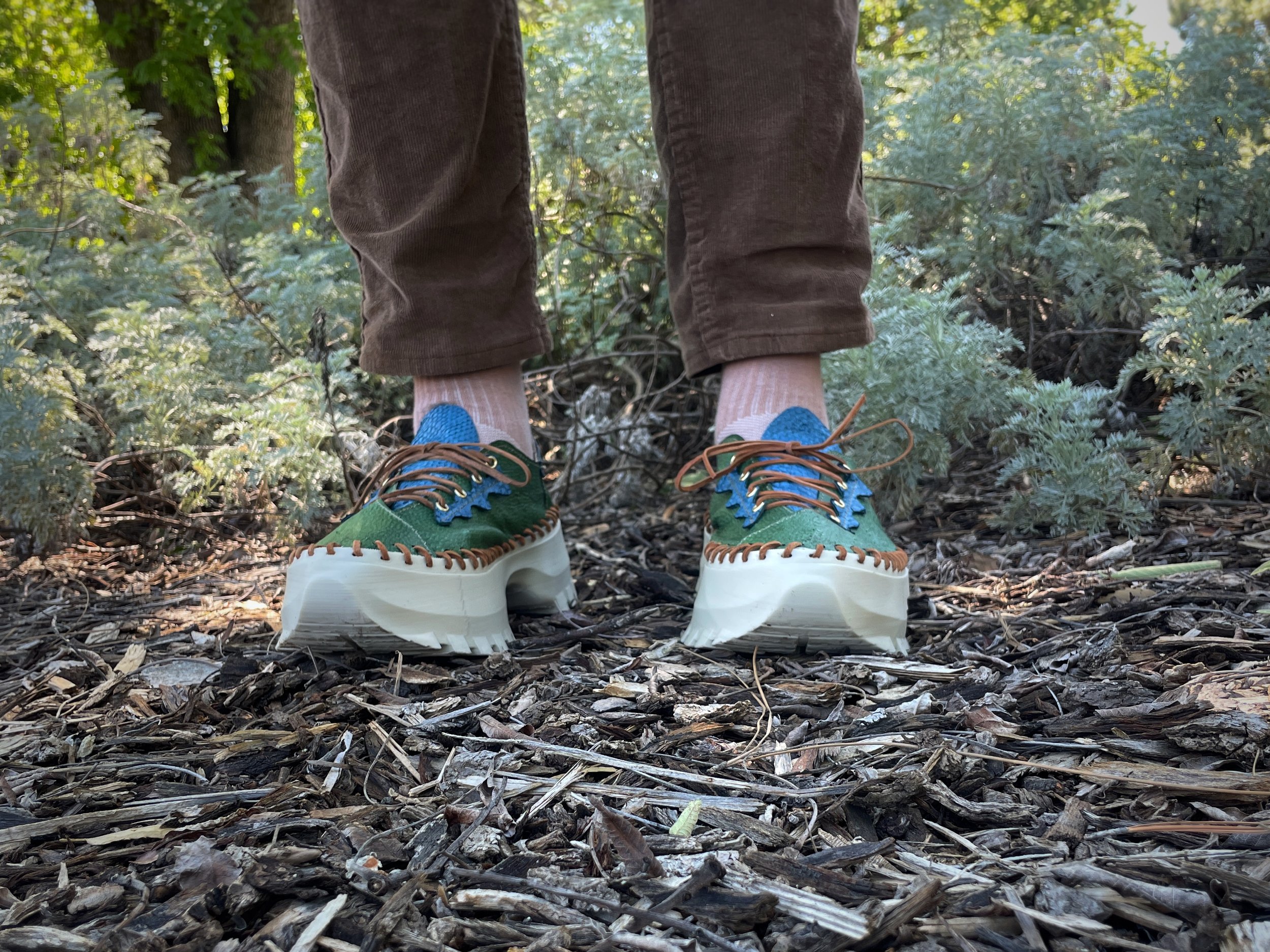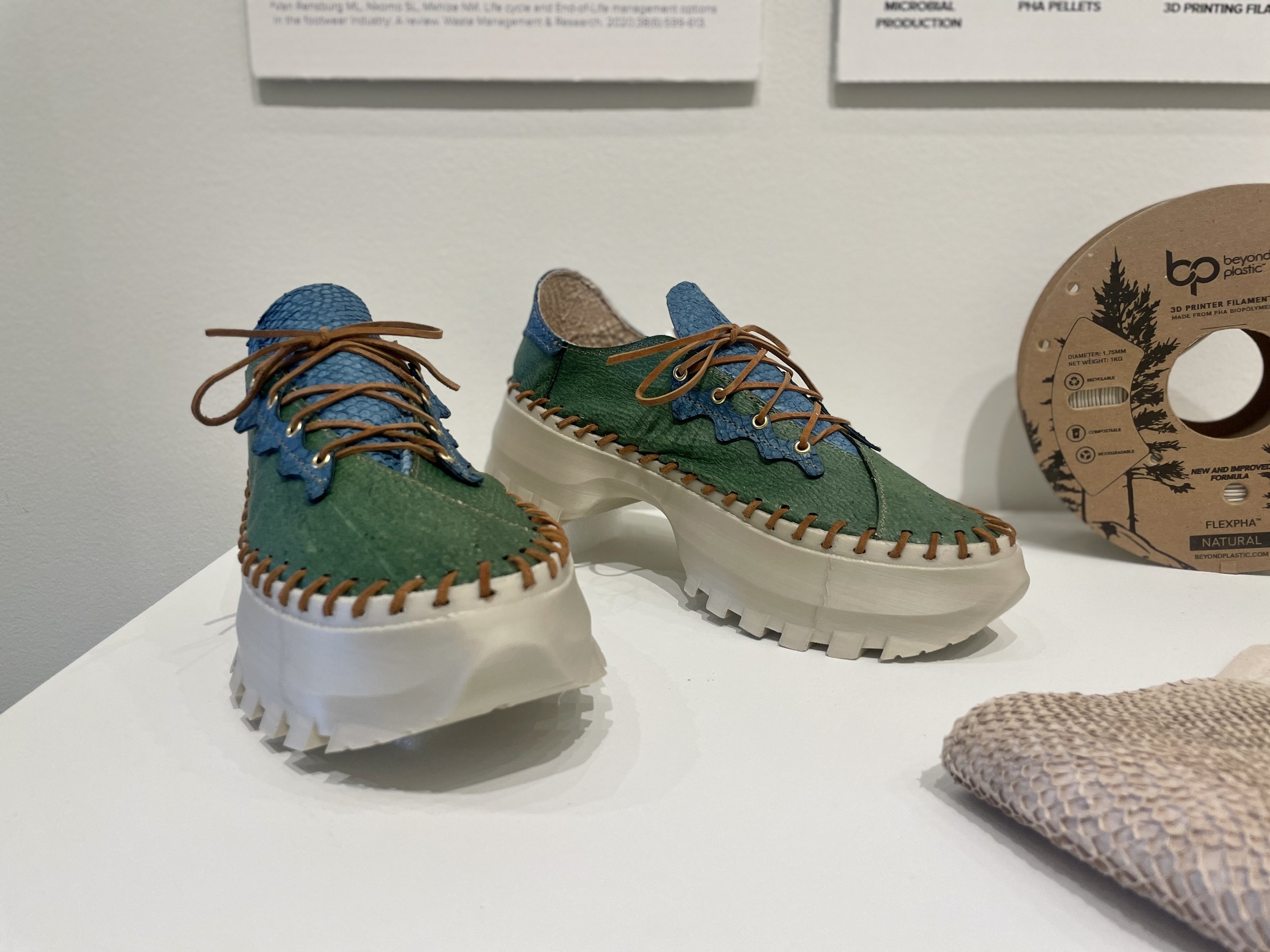The goal of Re/Pair is to produce a pair of sneakers that achieves a circular lifecycle through craft thinking and digital fabrication while addressing the issues of fashion industry waste by promoting the development of local and small-batch production.
Repairability emerged as the central focus for these shoes. Repairability is inherently linked to handcraft, as the skills to create an object also enable its repair. This mindset embodies the essence of craft thinking. The ability for a consumer to repair their own shoes without special tools, machines, and skills is an essential element to the success of these sustainable shoes.
Currently, the limited recyclability of individual sneakers is due to their conventional construction—where components are often glued together—complicating the recycling sorting process. Making a shoe without glue that can be easily disassembled is key to overcoming this challenge.
While modularity increases accessibility, simply discarding the worn components would exacerbate the fashion industry's waste dilemma. To counter this, the sneakers are made using recyclable or biodegradable materials. This modular shoe concept is made of two main components: an aquatic leather upper (Aquaborne) and the 3D printed PHA sole (Beyond Plastics). Both of these materials are organically based, ethically sourced, and produced in California.
Aquatic leather is an organic leather made of waste materials from the seafood industry. The manufacturer, Aquaborne, collects fish skins for fisheries and converts them into leather using an environmentally friendly tanning process. The process is chemical-free, using only natural tannins found in mimosa and oak trees. While comparable to vegetable-tanned cowhide, the aquatic leathers take on the unique characteristics of the different fish species they derive from; characteristics such as shape, size, color, and texture.
Polyhydroxyalkanoates (PHA)are a class of biodegradable polymers produced as a byproduct from a methanotrophic bacteria that feeds on methane gas. PHAs (figure 15.) are degradable in both home composts and marine environments. The rate of decomposition is based on various factors such as temperature, microbial activity, and material surface exposure. Nevertheless, studies have shown that PHA can degrade within 1 to 3.5 yrs, considerably faster than PLA (Polylactic Acid), a commonly used 3d printing filament.
Multiple test prints with the PHA flexible filaments were conducted to determine the best print settings for a comfortable yet supported and flexible sole. In the end a 3D cross infill pattern was used at a density of 20%. A doubled top and bottom layer ensured increased durability for the tread and footbed. The shoe was printed horizontally to decrease the chances of layer delamination. It was also printed upside down to insure high-fidelity printing of the sole tread.
The upper uses an asymmetrical pattern. While this was done for aesthetic purposes, it was somewhat determined by the shape of the aquatic skins. Re/Pair uses Salmon and Mahi Mahi leathers which are fairly slender in raw form. The pattern had to be developed to conform to these constraints. The pieces were machine stitched to complete the upper, then attached to the outsole using leather lace in a whipstitch (although multiple stitching patterns can be used).







